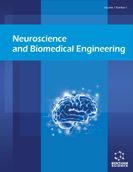Abstract
Transcranial direct current stimulation (tDCS) involves passing low currents through the brain and is a promising tool for inducing alteration of cortical excitability. However, tDCS presents challenges in terms of optimization of the electrode placement and stimulation parameters especially in cases of heterogeneously damaged cortical structures. The analysis of a simplified multi-shell computational head-model indicated that the neuronal fibers lying perpendicular to the electrode-scalp interface in the white matter (WM) beneath the stimulating anode are subjected to a depolarizing drive while those lying parallel to the electrode-scalp interface are exposed to a hyperpolarizing drive, but in the gray matter (GM) the opposite was observed. Moreover, parameter sensitivity analysis revealed that the neuronal fibers lying perpendicular to the electrode-scalp interface in the GM beneath the anode were subjected to a depolarizing drive while those lying parallel to the electrode-scalp interface were exposed to a hyperpolarizing drive when the WM and GM conductivity were 0.13S/m and 0.2S/m respectively. However, when the WM conductivity was increased to 1.1 S/m (GM at 0.2 S/m), the results were reversed. This highlighted the importance of accurate conductivity values in computational head-model in the cases of diseased brain tissue. Here, anisotropic conductivity and fiber trajectories can be estimated from diffusion magnetic resonance imaging (dMRI) which provides excellent anatomical details, and can be used to differentiate between healthy, ischemic, and perilesional brain tissue. Such dMRI-guided patient-specific head-models can be used to optimize electrode placement and stimulation parameters that is based on the distributions of the generalized activating function. Here, a Magnetic Resonance Current Density Imaging (MRCDI) based method is proposed for dMRI-guided subject-specific parameter estimation and model validation that is a novel approach in our opinion.
Keywords: Magnetic resonance current density imaging, transcranial direct current stimulation, diffusion magnetic resonance imaging, stroke, finite element methods.
Graphical Abstract
 6
6

